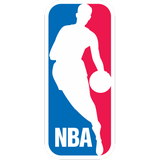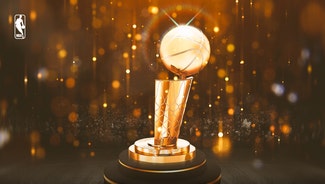
The 2024 NBA Draft is bad — especially for GMs and scouts
The word is out on the 2024 NBA Draft: it's trash. Historically bad. Epically disappointing. Quite possibly, the worst ever.
NBA front-office personnel, of course, routinely try to temper expectations for a draft over the course of the year. But then, as they do their background checks, March Madness heroes emerge, the draft combine and private workouts are held, they lighten up. A more optimistic tone is struck.
This year, though, looks to be an exception.
"It reminds me of the 2013 draft when Anthony Bennett went No. 1," a Western Conference executive said. "There was not only no clear-cut No. 1, there was no clear-cut top 3. Cleveland didn't know who they were picking until the day of the draft. We had a top pick and did everything we could to get out of that draft. It was full of career role players and back-ups. That's what I think of this draft. It has good role players, ready-to-play-now guys, it just doesn't have All-Stars. Or ones that you know are going to be All-Stars."
That last part might just be the biggest reason for all the grumbling. It's a bad draft for GM/executive/scout job security. Because there is a higher-than-normal chance that the player they choose winds up making less impact or having a shorter career than a player taken 10 picks later. While the 2013 draft only produced three All-Stars — Giannis Antetokounmpo, Victor Oladipo and Rudy Gobert — it also had a dozen solid role players who are still in the league today. They just weren't all taken at the top of the draft.
And it also produced eight first-round picks, led by Bennett, who lasted five years in the league or less.
"There are good players in this draft," said an Eastern Conference executive. "The issue is, even in the top 3, there are no franchise changers. It's basically 2013 without Giannis. The challenge for the weaker front offices is that they can't rely on crowdsourcing through mock drafts and general league consensus to make the obvious, ‘I can't get fired for taking him' player."
[2024 NBA Mock Draft 1.0: How high will Zach Edey and Donovan Clingan go?]
Every draft is an exercise in educated guessing, but several reasons were given for why identifying the players with the most NBA potential in this one is particularly challenging. Thanks to added years of eligibility because of Covid and the lure of NIL deals, upperclassmen now have had the means and motivation to stay longer, raising their draft profiles while squeezing the roles and exposure of one-and-done NBA talent. Tennessee's Dalton Knecht and University of Connecticut freshman Stephon Castle, both sturdily built 6'6 scoring wings expected to be lottery picks, capture the conundrum. Knecht played two years at the junior college level, then two years at the University of Northern Colorado before joining the Volunteers as a fifth-year senior. He averaged nearly twice as many points (21.7 to 11.1) as Castle, but he also just turned 23 years old. Castle doesn't turn 20 until November.
"That's a f---ing four-year age difference," said the Western Conference GM. "Which one do you take? If everybody played college and there were no people in college older than 21, then you would just draft the best player. As college teams have gotten older, it's harder for the heralded one-and-done guys to be immediately impactful. It sucks from a marketing perspective and creates more risk for scouts."
Where a player is drafted can also be a factor in whether or not they ultimately stick in the league. Being the No. 1 pick in a draft comes with weighty expectations that are not always realistic based on the composition of the team and the maturity of the player. The same can be said for a lottery vs. a late first-round or even second-round pick. Which means it's not just a matter of selecting a player on potential but his ability to handle the pressure of expectations.
"If Anthony Bennett is taken No. 17, he's probably still in the NBA," said the Western Conference executive. "Number one was just too much for him to live up to."
Another issue is that the best talent in the draft is primarily foreign. Three of the top five picks are expected to be players currently overseas, starting with Frenchmen Alex Sarr, an 18-year-old center for Australia's Perth Wildcats, going No. 1. Despite the success of Nikola Jokić and Giannis Antetokounmpo and Luka Dončić, NBA teams still are paranoid about how players in the international game will perform in the more athletic, isolation- and straight-line style of the NBA. There are always busts and surprises, but the number of drafts chock-full of international players taken in the first round and the draft's best foreign player being taken in the second round is not uncommon. Dante Exum, Dario Saric, Jusuf Nurkic, Bruno Cabloco, Clint Capela and Bogdan Bogdanovic were all drafted ahead of Jokic, the 41st pick, in the 2014 draft. Why? All appeared vastly more athletic, for starters.
But at least most of those 2015 foreign players are still in the league. The 2016 draft was thick with highly touted international players who didn't pan out at all. Dragan Bender, Thon Maker, Georgios Papagiannis, Juancho Hernangomez and Guerschon Yabusele were all taken among the first 16 picks. Not one of them is in the league today, but Clippers center Ivica Zubac, the 32nd pick, is.
Nothing quite underscores the inherent distrust of foreign talent, though, than Dallas Mavericks star Luka Dončić. There's never been a more accomplished foreign player — as a teenager, no less — yet he was passed up by both the Phoenix Suns and Sacramento Kings in favor of big men from high-profile U.S. collegiate programs, Arizona's DeAndre Ayton and Duke's Marvin Bagley III. The disrespect didn't end there; the Atlanta Hawks took him third and then dealt him to the Mavericks for fifth-pick Trae Young and the Mavs' 2019 first-round pick.
"Luka was the best and most proven rookie to come into the NBA in the last 20 years and didn't go No. 1," the Western Conference GM said. "We still evaluate the quality of drafts based on how many super-talented American guys, preferably ones who played in college, it has."
Sarr is in no way being compared to Doncic or his countryman, 2023 No. 1 pick Victor Wembanyama. When asked where Sarr would go in last year's draft, the Eastern Conference executive had Orlando taking him sixth instead of Anthony Black, just behind Detroit's Ausar Thompson. "Last year's draft was a crapshoot after five," he said. An Eastern Conference college scout had Sarr going 12th to Oklahoma City instead of Dereck Lively. An Eastern Conference GM had him going anywhere from "8th to 15th, depending on the team."
It doesn't help Sarr's stock that he is in the Australian National Basketball Association, which is ranked below almost every European league despite, in recent years, grooming a handful of solid NBA players — LaMelo Ball, Josh Giddey, Jock Landale and Bilal Coulibaly among them. The general priority list for how NBA teams allot their scouting resources appears to be: 1. U.S. colleges. 2. Top European leagues. 3. Top Eurasian leagues.
"Every team and their scouting department is based around scouting college basketball," the Western Conference GM said. "So everybody is out there scouting college games all the time. Now if there's some kid playing in Spain or France or Serbia or whatever, you've got to figure out a way to add that in. If there's 70 people in the scouting department, I bet you five of them in a given year are working on Europe full-time. It's just the way teams historically have been set up. So 70 people are weighing in and let's say 20 of them did their homework, they watched a ton of European basketball, they're really on top of it. You've still got 50 guys who don't want to do it and didn't do it, and now they're uneducated and they're just going to put the foreign prospect down."
Where some see challenges, though, others see opportunity. The muddiness of this draft should allow the teams with the strongest talent evaluators to shine, regardless of where they might be drafting. There should be less pressure from ownership to select a high-profile name for marketing purposes or because they were hyped by fans and mock-draft experts online.
"The intriguing part of this draft is you don't have to worry about increasing your risk tolerance by taking a player outside the consensus," the Eastern Conference executive said. "Because there is no consensus. So you can actually take the guy you really want without having to live with the fans being upset over your website trade grade by the mock-draft experts."
The uncertainty over how to rank this year's prospects also means that the upcoming draft combine and private workouts could have a greater influence than usual.
"The combine and workouts will move the needle for lots of guys," the NBA college scout said. "Because there is so little certainty about anyone."
So is this underwhelming draft the start of a trend or a blip on the radar? As of now, it's expected to be a blip.
"We want it to be that the best players are college guys," the Western Conference GM said. "If there's a really good college crop, which there will be next year, we're going to say the draft is awesome."
Ric Bucher is an NBA writer for FOX Sports. He previously wrote for Bleacher Report, ESPN The Magazine and The Washington Post and has written two books, "Rebound," on NBA forward Brian Grant's battle with young onset Parkinson's, and "Yao: A Life In Two Worlds." He also has a daily podcast, "On The Ball with Ric Bucher." Follow him on Twitter @RicBucher.








